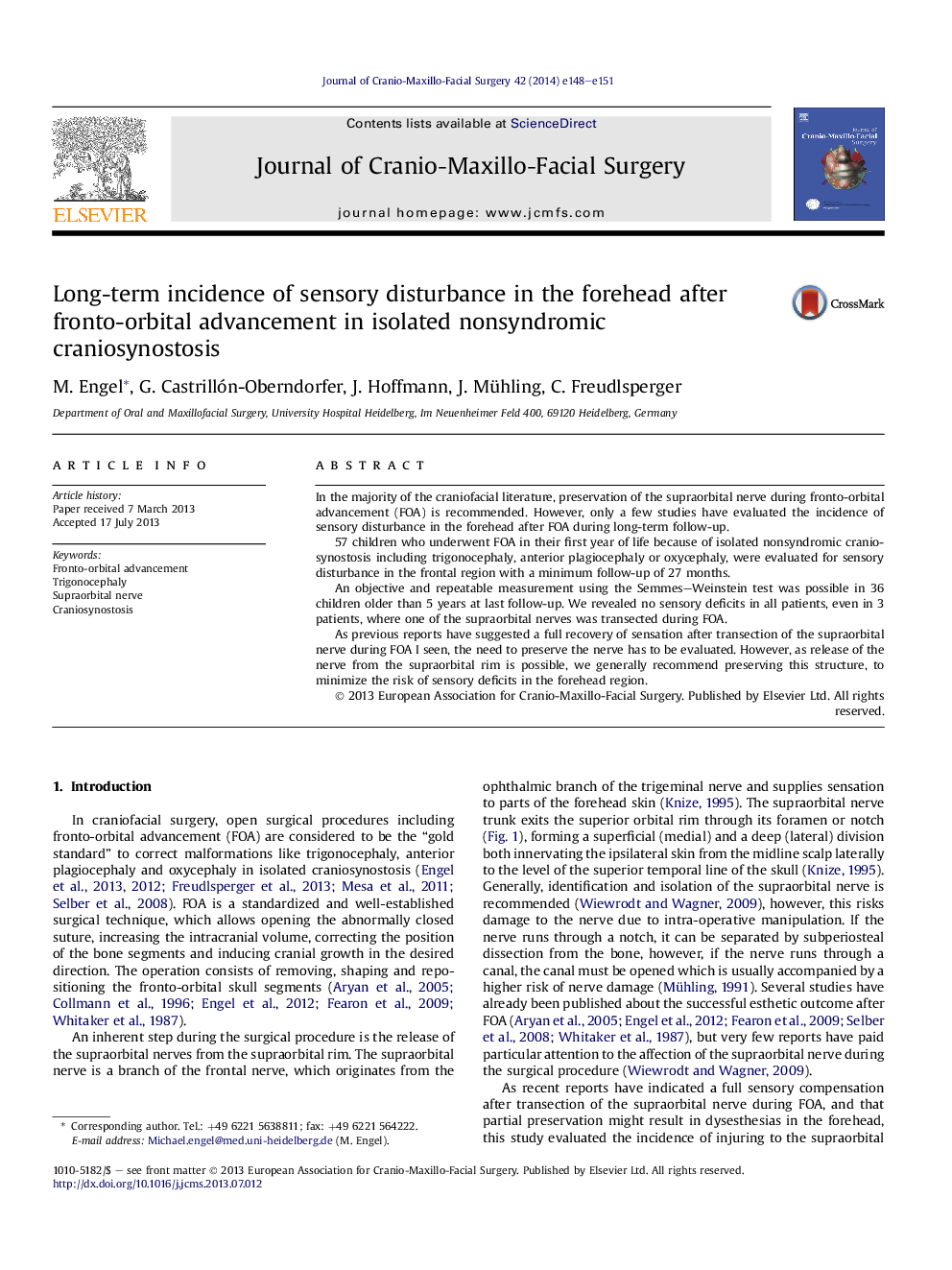| کد مقاله | کد نشریه | سال انتشار | مقاله انگلیسی | نسخه تمام متن |
|---|---|---|---|---|
| 3142619 | 1196789 | 2014 | 4 صفحه PDF | دانلود رایگان |
In the majority of the craniofacial literature, preservation of the supraorbital nerve during fronto-orbital advancement (FOA) is recommended. However, only a few studies have evaluated the incidence of sensory disturbance in the forehead after FOA during long-term follow-up.57 children who underwent FOA in their first year of life because of isolated nonsyndromic craniosynostosis including trigonocephaly, anterior plagiocephaly or oxycephaly, were evaluated for sensory disturbance in the frontal region with a minimum follow-up of 27 months.An objective and repeatable measurement using the Semmes–Weinstein test was possible in 36 children older than 5 years at last follow-up. We revealed no sensory deficits in all patients, even in 3 patients, where one of the supraorbital nerves was transected during FOA.As previous reports have suggested a full recovery of sensation after transection of the supraorbital nerve during FOA I seen, the need to preserve the nerve has to be evaluated. However, as release of the nerve from the supraorbital rim is possible, we generally recommend preserving this structure, to minimize the risk of sensory deficits in the forehead region.
Journal: Journal of Cranio-Maxillofacial Surgery - Volume 42, Issue 5, July 2014, Pages e148–e151
